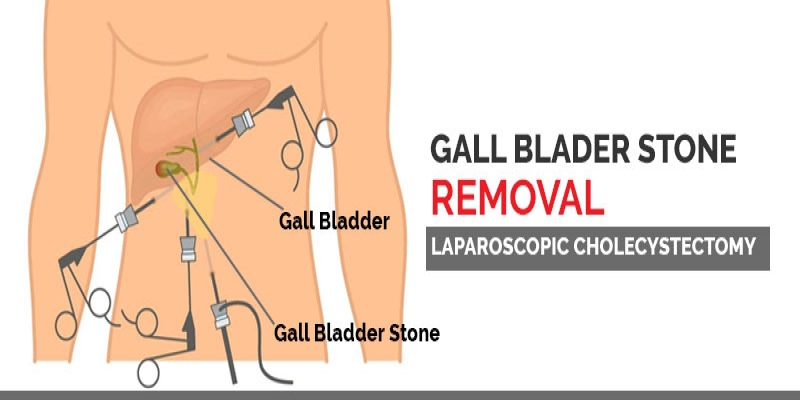All You Need to Know About Gallbladder Stones
2019-01-29 / RG STONE HOSPITAL / Gall Bladder Stone

Gallstones also known as gallbladder stones , are not really stones but are solid material formed in the gallbladder. The gallbladder is a small pear-shaped organ that is located below the liver, on the right of the abdomen. The gallbladder has a digestive fluid known as bile that gets released in the small intestine. Gallstones can be as small as a grain of sand or as large as a golf ball. People can develop one or more gallstones at one point in time. It usually does not have any symptoms or need treatment till the time they do not cause any pain.
Types of Gallbladder Stones
There are Two main types of gallbladder stones:
1. Cholesterol stones: The most common types of gallstones, usually in yellow-green color. More than eighty percent of the gallstones are cholesterol stones.
2. Pigment stones: Also known as Bilirubin These are darker and smaller stones made of bilirubin. Bilirubin is a kind of fluid that comes from the bile. Bile is made by the liver and stored by the gallbladder.
Causes of Gallbladder Stones
Gallstone formation can result from a combination of factors such as genetic predisposition, obesity, dietry habits and gall bladder dysfunction. Contrary to common belief, bile is not the underlying cause of stone formation.The body needs bile, but the gallstones get formed only when the levels of cholestrolis the bile is high. It also happens when the gallbladder does not empty properly.
Pigment stones are commonly seen in people with certain medical conditions, like Cirrhosis of the Liver and critical blood diseases like Sickle Cell Anemia.
Symptoms of Gallbladder Stones
The gallbladder stones might show absolutely no symptoms and signs. If the gallstone is lodged in the duct and forms a blockage, then an individual might face a few symptoms
- Sudden and rapidly intensifying pain in the upper right area of the abdomen
- Sudden and swiftly growing pain in the center of the abdomen and or below the breastbone
- Pain ine back especially between the shoulder blades
- Pain in the right shoulder
- Vomiting and nausea
The pain can last for several minutes to several hours. At times like this it becomes imperitive to call a health care expert. Some symptoms and signs of serious gallbladder stone complications, like:
- High fever accompanied with chills
- Yellowing of the skin and the whites of the eyes
- Intense abdominal pain making you unable to sit still or stay in a comfortable position
Ways to Prevent Gallbladder Stones
There are several ways to reduce the risk of gallbladder stones.
- Do not skip meals: Stick to the regular meal timings every day. Fasting or skipping meals frequently increases the risk of having gallstones.
- Gradually lose weight: Gradual weight loss is recommended, as rapid weight reduction can raise the risk of gallstoneformation due to incrreased cholesterol production by the body. A safe and effective rate of weight loss is typically 0.5 to 1 kg per week.
- Maintenance of a healthy weight: Being overweight or obese increases the risk of gallstones. Aim for a healthy weight by increasing your physical activity and reducing your calorie count.
If you are experiencing pain due to gallbladder stones, consult your doctor regarding your options of treatment, surgically removing the gallbladder or dissolving gallstones through medication.
Categories
Hernia Repair
Appendicitis
Piles
Urological Treatment
Hernia treatment
Enlarged Prostate (BPH)
Gall Bladder Stone
Urinary / Kidney Stone
Vitamins
Indian Health Care System
Exercise
Obesity
Female Urinary Incontinence
Single Incision Laparoscopic Surgery (SILS)
Kidney Cancer
Bladder Cancer
Ovarian cancer
Nephrology
Bariatric Surgery
Kidney Function Test
Female Urology
Radiation Therapy
Alcoholic Fatty Liver
Liver disease
Gastroenterology
Kidney Disease

